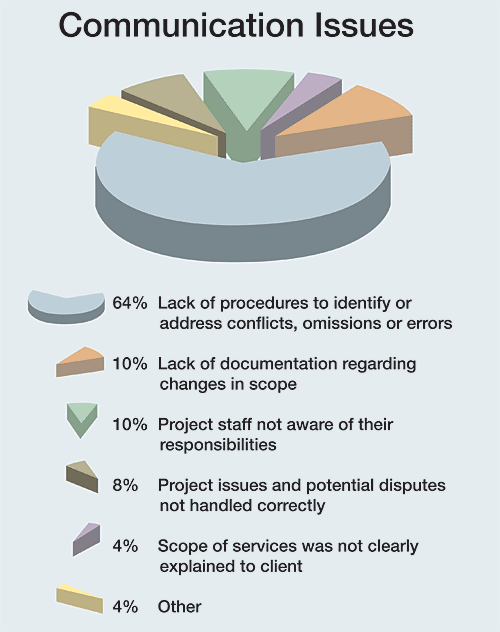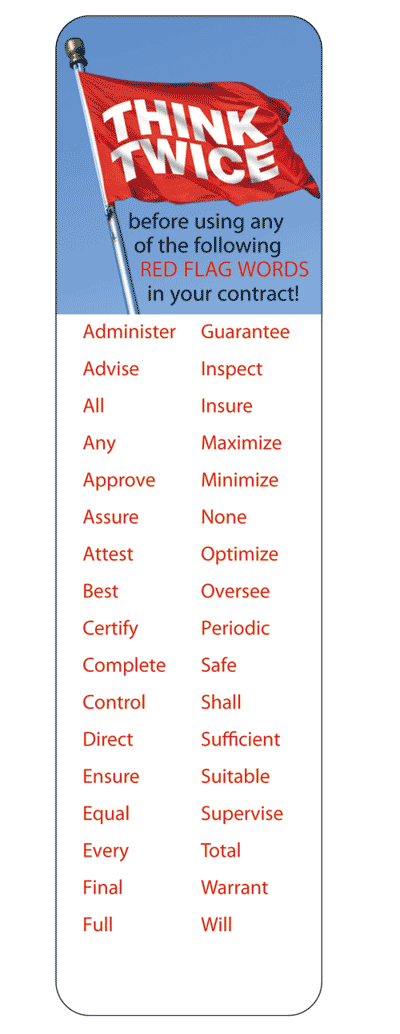Managing Client Expectations to Reduce Professional Liability Risk
- Client Representative Report
From the minute the design firm becomes involved with a project, even before contracts are signed, another avenue for managing client expectations is the client representative report. Prepared weekly by the project manager for delivery to the client's rep (or directly to the client), this report not only serves as a snapshot of where the project stands in terms of schedule and cost, it also reminds the client of the value the design firm has provided in the past week and will provide in the coming week. It also spells out all the matters the client needs to decide or provide more information to the design team about.
The client rep report is a great way to let the client know you're staying on top of all aspects of the project. Once documented, it's a lot more difficult for the client to claim at any point, "You never told me about X, Y, or Z." One firm reports that since they instituted client rep reports, "it's absolutely amazing the number of problems that simply went away."
Finally, should the project manager or other key member of the project team change during the course of the project, a new person can use the client rep reports to quickly get up to speed on the project.
The leading cause of risk-by far-is the lack of procedures within A/E firms to deal with client conflicts as well as project errors and omissions (E&Os).
Courtesy of X.L. America, Inc. © 2007
- Gatekeepers
Another safeguard firms find useful in managing client expectations is the appointment of "gatekeepers" for clients and their projects. By giving just one or two staff the primary responsibility for client management, the firm takes a giant step toward project consistency. For instance, clients are prevented from approaching multiple team members in order to get them to perform tasks outside the scope of services. "Gatekeepers are the people in firms that make the go/no-go decisions to accept the client, the project, terms, conditions, scope, and fees," Rabasca explains. "By limiting who can make these decisions, the firm can better manage the risk of selecting clients who bring unrealistic expectations to the process."
- Post-Project Reviews: Learning from Experience
In order to make sure you carefully manage the client's expectations on your next project, you'll do yourself a big favor by reviewing how well you managed them on the last one.
|
Each project should receive a thorough post-project study, with careful attention paid to where the project may have veered from the scope and how much the client's expectations - whether realistic or not - contributed to the project's ultimate outcome.
Courtesy of X.L. America, Inc. © 2007











